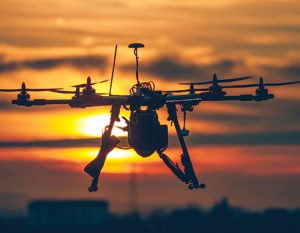Car GPS is still vulnerable to possible interference. Some governments are increasingly promoting a backup radio technology called enhanced long-range navigation (eLoran). For many years, people have been worried that car GPS is vulnerable to interference or tampering. Therefore, a small number of governments suddenly warned about a backup wireless technology called enhanced remote navigation (eLoran). In early August, Reuters reported that the Ministry of Oceans and Fisheries of South Korea was trying to verify the technology before 2019. In addition, even if Russia is promoting its own version of eLoran called eChayka for Arctic routes, it is possible that the United States may invest taxpayer money to do the same thing and do so on a large scale.
After the recent increase in incidents involving GPS interference, these countries are likely to continue to work in this direction. Last year, North Korea was accused of playing a role in severe traffic jams on dozens of South Korean ships, which were so severe that they were forced to return to port. Other incidents led the US Coast Guard to issue gps jammer warnings in early 2016 and reported large-scale jamming of the Black Sea in June this year.

Although these incidents can be considered new incidents, in recent years, the dangers they pose have not been discussed extensively not only in maritime transport. In the UK, disrupting the GPS signal tracking routine of trucks has been a growing problem for many years. Considering the great danger of ships, why can eLoran take so long to be put into use? Shipping has always been a complicated task, but the introduction of GNSS (Global Navigation Satellite System) technologies such as GPS, Russian GLONASS and European Galileo has made life easier. With these, the ship can determine its position, course and speed at any position on the earth’s surface with very high accuracy in all weather conditions.
These are very useful for avoiding collisions, but GPS signals are relatively weak, and deliberate interference from sunlight may cause problems. Even today, the captain must be able to use other options such as radar, magnetic compass and traditional navigation maps. The challenge is that changing from GPS to a manual backup system takes time and can be dangerous in an overloaded navigation lane. On the other hand, ships using eLoran can switch automatically without delay. The output power was developed for long-distance operation on the 100 kHz low-frequency spectrum, so it is more difficult for cyber criminals to interfere with GPS than GPS. It is difficult to forge because the ground transmitters are in a limited number of fixed locations.
Although it was planned to implement President Bush’s electronic loan in 2004, it was blocked due to cost reasons (the network of expensive senders is only used for transportation) and political inertia. The UK is a strong supporter of this technology, but it is difficult to persuade its neighbors to invest in a modern, decades-old Roland radio infrastructure with complete maritime coverage. Lack of ambition may be another problem. At least one country, Norway, wants to know that radar is not an acceptable solution to avoid collisions on the high seas. The recent GPS accident explosion may eventually reverse the situation. Unfortunately, only after politicians can use major cyberattacks can large-scale global investments be made in a few countries.